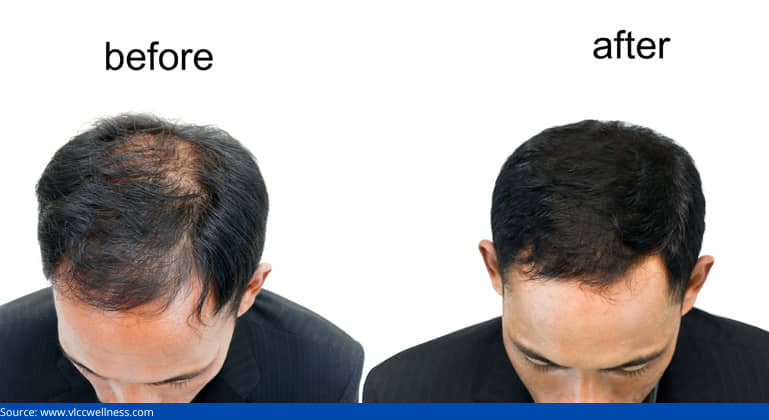Alopecia affects around 147 million people globally, with male and female pattern baldness affecting more than half of men and women at some stage of life. With figures like these, it is easy to see why an increasing number of people are looking for effective hair loss treatments.
Unfortunately, it appears that for every effective alternative on the market, there are several others that do nothing but empty your pockets and give you false hope. However, Dr. Archit Aggarwal, among the best dermatologists in Faridabad, says that there is some good news.
Hair restoration procedures and technologies have advanced in recent years, giving patients access to options that deliver meaningful, long-term results.
What does the term hair restoration mean?
Hair restoration is a surgical hair loss treatment that involves implanting hair to parts of your scalp that are bald or thinning. It is also known as hair transplant or hair replacement. It is typically used by those who have already explored other hair loss therapies.
Hair transplants are performed by dermatologists (healthcare professionals specializing in skin conditions and treatments) or plastic surgeons (healthcare professionals specializing in reconstructive techniques).
This article examines the success rates of the 2 main types of hair transplants, potential risks, and adverse effects.
What are the different types of hair transplants?
Hair transplantation can be divided into two categories:
FUSS (Follicular strip unit surgery), also known as FUT (Follicular unit transplant)

In the FUT hair transplant, the surgeon removes a strip of skin from your donor area and patches the incision using stitches. Using a microscope, they will then split the harvested skin into minute follicular units containing one or more hair follicles and put the units into the recipient location.
There will be some scarring in the incision site.
FUE (Follicular unit extraction)

In FUE, the surgeon will pluck follicles from your donor area using a micro punch tool. A technician will select the healthy and viable follicles, after which the surgeon will transplant them into the recipient area.
Although there will still be some scarring after this operation, it will be hardly noticeable, and stitches are not usually required.
Both strategies are effective, although they produce distinct results in some circumstances. According to the authors of a 2019 research, FUE needs more expertise and takes more time than FUT, but it can give excellent outcomes if the surgeon has extensive experience with the procedure.
Dr. Archit Aggarwal, an eminent dermatologist and trichologist in Faridabad, adds that both procedures require local anesthesia. They can take several hours, depending on the number of follicles that need to be implanted. You should be able to go home on the day of your treatment.
What is the donor area?
Most of the time, the donor location is the back or side of your head. The skin from your chin, underarm, chest, or back, on the other hand, can also be effective. Body hair can be beneficial for individuals who lack thick hair on the sides or back of their heads.
According to some studies, taking beard or body hair is more difficult and time-consuming than using scalp hair. However, it has been found that the body and beard can be a great source of donor hair for hair restoration.
What is the success rate of a hair transplant?
Hair transplant procedures are very effective for hair regrowth following hair loss. The success rate of a hair transplant procedure is determined by several factors, including the surgeon’s ability and expertise and how thick the donor hair is.
According to one study, most persons who had FUE with beard or body hair coupled with scalp hair were pleased with the outcomes at a follow-up of an average of 2.9 years. The average overall satisfaction score among the 79 participants was 8.3 / 10.
According to another study, combining FUE with PRP (platelet-rich plasma) therapy improves the success of an FUE hair transplant. This study found that after 6 months of this technique, all PRP subjects had regrown more than 75% of their hair. Hair density and skin healing were improved more quickly than in the non-PRP group.
What can you do to ensure the procedure is a success?
You must follow your surgeon’s post-procedure instructions for optimum results. You will have a better chance of having an effective hair transplant in this way.
For example, you will need to avoid vigorous activities and exercise for several weeks after the procedure.
You will also have to wait for a few days before you can shampoo your hair.
The well-known hair and skin specialist, Dr. Archit Aggarwal, adds that periodical follow-ups will help the healthcare specialist ensure that your scalp is recovering well.
What are the risks and side effects of a hair transplant surgery?
Like any other procedure, a hair transplant has some risks and side effects.
Risks include:
- Anesthesia-induced allergic response.
- Bleeding for up to a few days to 2 weeks after surgery.
- Infection.
- Numbness in the scalp.
- Scarring.
Temporary side-effects include:
- Scabs or crust.
- Itchiness.
- Throbbing or pain
- Swelling.
- Tightness.
Conclusion

A head full of hair is considered a sign of good health, virility, and youthfulness. A good hairstyle or haircut can enhance your overall attractiveness and boost your confidence to the next level. A hair transplant treatment may be a viable alternative for those experiencing hair thinning or loss. Although it is not a long-term solution for thinning hair, it can help many people regain the fullness of hair and confidence.
If you are worried about hair loss, please schedule an appointment with Dr. Archit Aggarwal before it becomes worse. Waiting too long may prohibit you from taking advantage of preventative measures while they are still available. Dr. Archit Aggarwal is a top-notch dermatologist in Faridabad and is passionate about providing safe, reliable, quality haircare and skincare to all his patients.

